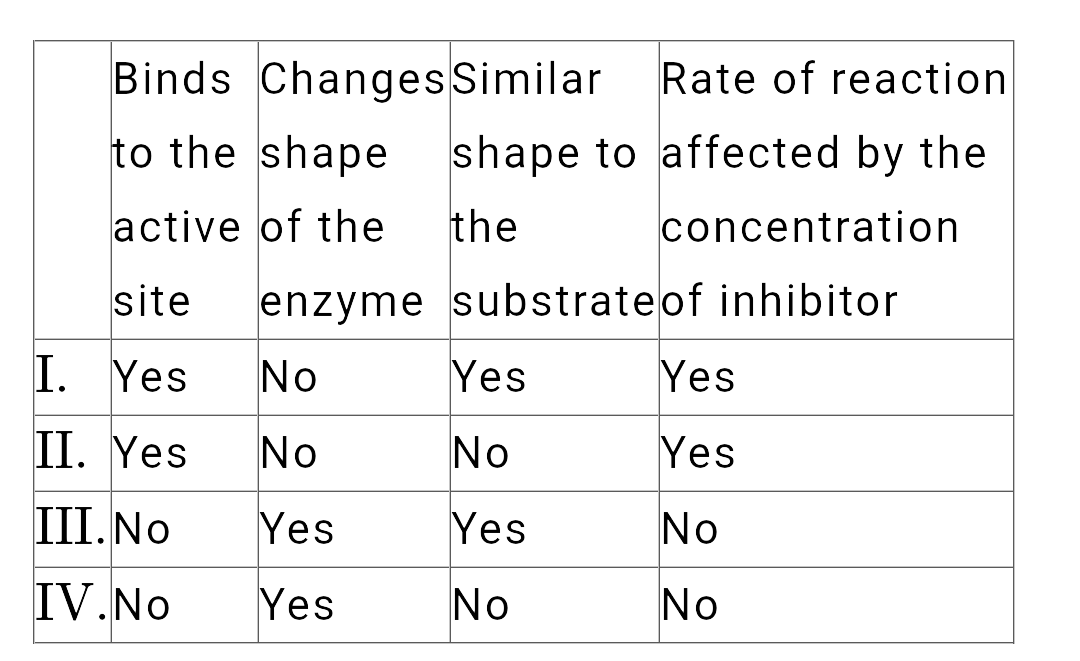Non-competitive inhibitors of the reaction.
Increase the
Increases the
Decrease the
Decrease the
To answer the question about non-competitive inhibitors of enzymatic reactions, we can break down the explanation into clear steps:
1. Understanding Enzymatic Reactions: Enzymes are biological catalysts that speed up reactions in living organisms. The activity of enzymes can be affected by various factors, including inhibitors.
2. Defining Non-Competitive Inhibitors: Non-competitive inhibitors are substances that bind to an enzyme regardless of whether the substrate is present. They do not compete with the substrate for the active site but instead bind to a different site on the enzyme.
3. Effects on Enzyme Activity: The presence of a non-competitive inhibitor decreases the overall activity of the enzyme. This means that the enzyme will catalyze reactions less efficiently.
4. Impact on Vmax: Vmax, or maximum velocity, is the rate of reaction when the enzyme is saturated with substrate. Non-competitive inhibitors decrease the Vmax because they reduce the number of active enzyme molecules available for catalysis, even when substrate concentration is high.
5. Impact on Km: Km, or the Michaelis constant, is a measure of the affinity of the enzyme for its substrate. In the case of non-competitive inhibition, the Km remains unchanged because the inhibitor does not affect the binding of the substrate to the enzyme; it only affects the turnover rate of the enzyme.
6. Conclusion: Therefore, the presence of non-competitive inhibitors leads to a decrease in Vmax while the Km remains unchanged.
Final Answer:
The correct answer is that non-competitive inhibitors decrease the Vmax of the reaction while the Km remains unchanged.
The correct answer is that non-competitive inhibitors decrease the Vmax of the reaction while the Km remains unchanged.
Topper's Solved these Questions
Similar Questions
In competitive inhibition
View SolutionIn competitive inhibition the
View SolutionCompetitive inhibition is due to
View SolutionAssertion (A) Non-competative inhibitor inhibits the catalytic activity of enzyme by binding with its active site.
Reason (R) Non-competitive inhibitor changes the shape of the active site in such a way that substrate can't recognise it .
View SolutionStains are competitive inhibitor of
View SolutionStatins are competitive inhibitors of
View SolutionSelect the option with features that are applicable for a competitive inhibitor of an enzyme - catalyzed reaction .

View SolutionMalonate is a competitive inhibitor of
View SolutionNon-competitive inhibition often results in
View SolutionA : Non-competitive inhibitors have no effect on Vmax.
R : In non-competitive inhibition, inhibitor and substrate bind at same sites on the enzyme.
View Solution
